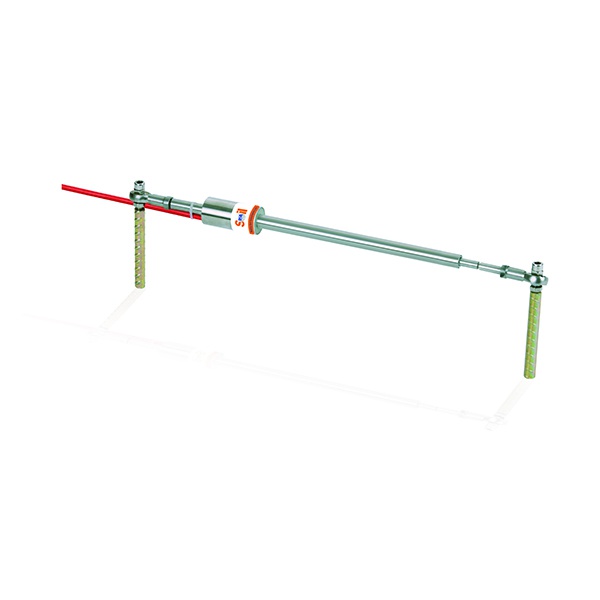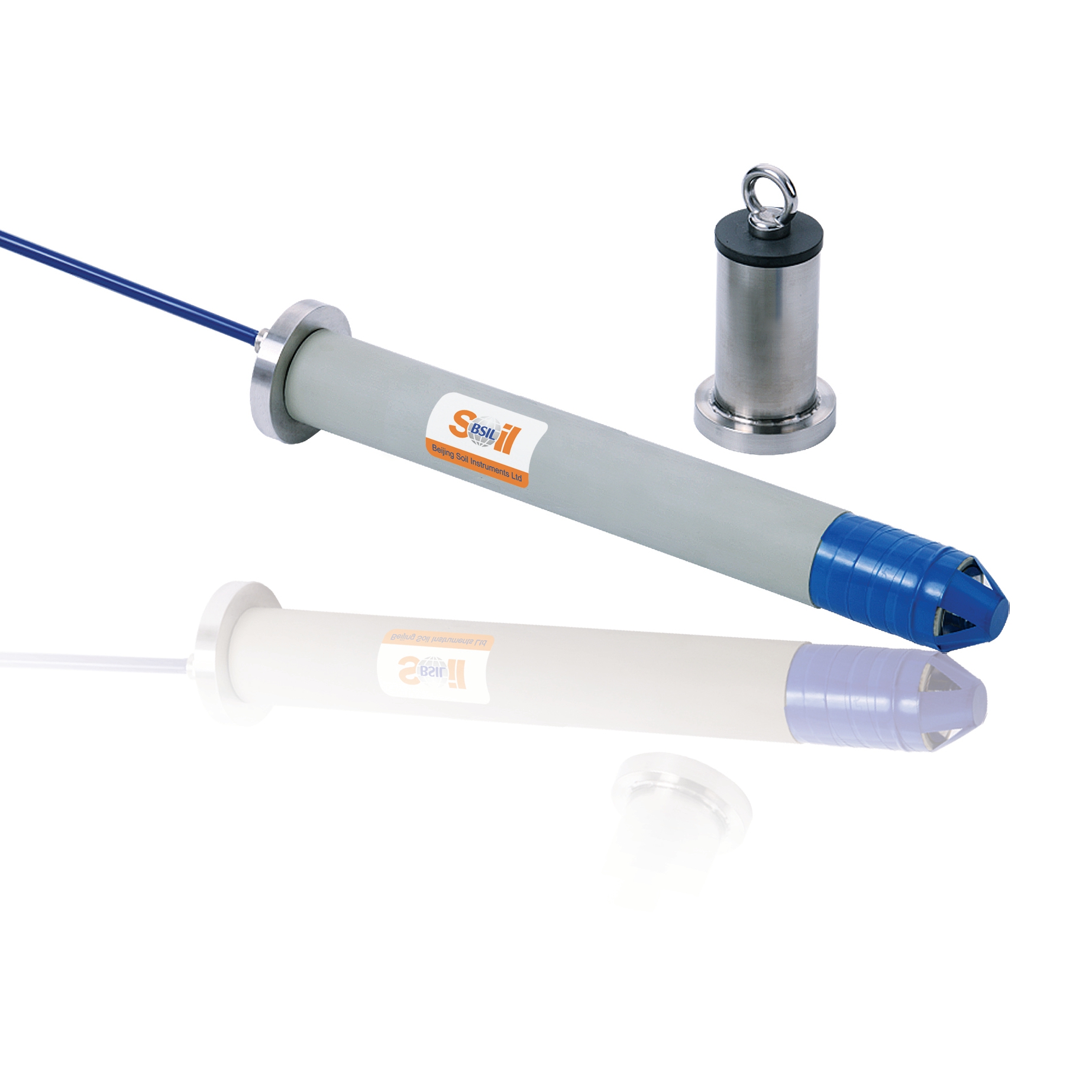Applications
The Model BSIL-J1 Vibrating Wire Embedment Jointmeter is designed primarily for the measurement of joint openings
between lifts or sections in mass concrete or across fracture zones in fully grouted boreholes. Typical monitoring applications include monitoring construction joints such as abutments, slabs, foundations and retaining walls, tunnels or shaft linings; arch,gravity and buttress dams.
Description
The Vibrating Wire Embedment Jointmeter comprises two parts;a socket and a main body. The socket is a detachable end that is cast into the first concrete lift. The main body is a protective outer case which houses a Vibrating Wire displacement transducer and screws into the socket. Once screwed into the socket, it is cast into the second lift of concrete.
The transducer has a Vibrating Wire sensing element which is anchored at one end and connected to a spring loaded push rod at the other end.
Any movement applied to the push rod causes the spring to contract or elongate, causing an increase or decrease in the
Vibrating Wire tension.
This tension is directly proportional to the movement applied and therefore the opening or closing of the joint.
Key Features
◆Accurate, long-term stability
◆Long working life, long-term stability and reliability
◆Suitable for manual or remote monitoring
◆Waterproof
◆Integral thermistor
Main Specifications
Mode: BSIL - J1
Range: 12.5, 25, 50, 100mm (Other ranges are available)
Resolution: 0.025% F.S.
Accuracy: ±0.1% F.S.
Temperature Range: -20 to +80°C
Dimensions: Dia.50mm (sensor)/ Gauge length depends on the range
Operation
The socket is installed in the first lift of concrete, using an installation plug to prevent concrete entering the socket.
Before the second lift of concrete is cast, the main body is screwed into the installed socket, extended sufficiently
(most commonly to its mid-point) to allow for expected joint movement, welded or tied to the rebar and then the second lift of concrete is cast.
When both lifts of concrete are complete, the jointmeter is now firmly anchored into each concrete lift and will measure opening or closing of the joint.
The sensing transducer is smaller than the protective body of the jointmeter, therefore a degree of shearing motion is
accommodated by universal joint connections within the unit.


